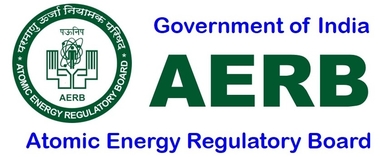Radioactive waste management
The waste management activities for both radioactive and chemical wastes generated from nuclear power plants and other nuclear fuel cycle facilities are in the purview of the regulatory body. The waste management in industrial and research facilities of DAE also are under AERB’s purview. Radioactive wastes generated in the medical facilities using radioactive source for diagnostic and/or therapeutic applications also have to meet safety requirements stipulated by AERB.
Radioactive waste management/disposal related information is categorized based on the source here.
The waste management aspects are reviewed throughout the life cycle of the plants, right from the siting stage, to construction, commissioning, operation and decommissioning stage of a NPP. Operating nuclear power plants generate solid, liquid and gaseous wastes. As a waste management philosophy, no waste in any physical form is released to the environment unless the same is cleared, exempted or excluded from regulations. Utmost priority is given to waste minimization, and volume reduction in the choice of processes and technologies adopted in radioactive waste management plants. The general philosophy for radioactive waste management being followed is as below:
- Delay and decay of short-lived radionuclides;
- Concentrate and contain activity as practicable; and
- Dilute and disperse low-level radioactive waste within the authorized limits.
The low level solid, liquid and gaseous wastes generated from nuclear power plants are disposed off as per approved method after ensuring compliance with the regulatory requirements. The current regulations specify that the radiation dose to the members of public living near the operating NPPs due to the discharge from the plants shall not exceed annual limit of 1 mSv (i.e 1000 micro-Sievert). This is in line with the limits set by International Commission on Radiological Protection (ICRP). Further based on the above limit, AERB issues ‘authorization’ which specifies the limits in terms of quantity and activity content of the waste that can be disposed. These authorisations are valid for three years and renewed after review of the performance of NPPs. AERB has further specified limits on liquid and gaseous radioactive discharges, through gaseous or liquid routes, in the Technical Specifications for operation of NPPs. These technical specification limits are set far below the dose apportionment to the public for the specific radionuclide.
The processing technologies adopted for management of nuclear waste are summarized below:
- Solid waste: Solid waste generated from nuclear power plants after suitable conditioning are disposed off in Near Surface Disposal Facilities (NSDF) located within the exclusion zone boundary of nuclear power plants. Near Surface Disposal Facilities are designed and constructed to contain the radionuclides within the disposal system until the radionuclides decay to negligible activity level.
- Liquid waste: Low level liquid waste generated from nuclear power plants are discharged to the environment after suitable treatment and ensuring compliance with the regulatory limit. The treatment system essentially comprises chemical treatment, evaporation, ion exchange, filtration etc.
- Gaseous waste: Gaseous waste is treated at the source of generation. The gaseous wastes are discharged to the environment through 100 m high stack after filtration and dilution with continuous monitoring of radionuclides and compliance with the regulatory limits.
India has adopted closed fuel cycle option, which involves reprocessing and recycling of the spent fuel. During reprocessing, only about two to three percent of the spent fuel becomes waste and the rest is recycled. At the end the high level waste will be emplaced in geological disposal facilities.
Nuclear power plants are supposed to submit “return of waste disposed” to AERB. AERB reviews whether the wastes disposed by NPPs are within the limits specified in technical specification during regulatory inspections. Also independent environmental survey is done by Environment Survey Labs instituted by BARC to assess the actual impact of the above releases to the environment.







